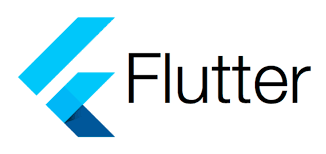
Certainly! Here’s a comprehensive guide on the Dart programming language:
The Dart Programming Language: A Comprehensive Guide
Introduction to Dart:
Dart is an open-source, object-oriented programming language developed by Google. It was first unveiled in 2011 at the GOTO conference in Denmark. Dart is designed for building web, mobile, and desktop applications. It aims to provide a productive and efficient development experience for developers.
History of Dart:
Origins:
- Dart was created by Google as a replacement for JavaScript in web development.
- The project started in 2010, led by Lars Bak and Kasper Lund, both of whom had extensive experience in virtual machines and programming languages.
Evolution:
- Dart evolved rapidly, with the first technical preview released in 2011 and the first stable release in 2013.
- Initially, Dart aimed to be a language for web development, but it has since expanded its scope to include mobile and desktop development.
Adoption:
- While Dart has not replaced JavaScript as originally envisioned, it has found adoption in various projects and companies.
- Dart is used internally at Google for projects such as AdWords, AdSense, and the Google Fiber website.
Features of Dart:
Object-Oriented:
- Dart is a fully object-oriented language, meaning that everything in Dart is an object.
- It supports classes, inheritance, interfaces, and other object-oriented features.
Strong Typing:
- Dart is optionally typed, allowing developers to specify types for variables, parameters, and return values.
- Strong typing helps catch errors at compile-time and improves code quality and maintainability.
Garbage Collection:
- Dart features automatic memory management through garbage collection.
- Developers don’t need to manage memory manually, reducing the risk of memory leaks and other memory-related bugs.
Asynchronous Programming:
- Dart provides built-in support for asynchronous programming using futures and async/await syntax.
- Asynchronous programming enables writing non-blocking code, essential for handling I/O-bound operations such as network requests.
Libraries and Packages:
- Dart comes with a rich set of libraries and packages for common tasks such as HTTP requests, JSON serialization, and unit testing.
- The Dart Package Manager (Pub) makes it easy to discover and install third-party packages.
Dart Syntax:
Hello World Example:
void main() {
print('Hello, Dart!');
}Variables and Data Types:
- Dart supports various data types, including integers, doubles, booleans, strings, lists, maps, and more.
- Variables in Dart can be declared using the
varkeyword or with explicit type annotations.
Control Flow:
- Dart supports traditional control flow constructs such as if statements, for loops, while loops, and switch statements.
- Dart also supports conditional expressions, allowing for concise and expressive code.
Functions:
- Functions in Dart are first-class citizens, meaning they can be assigned to variables, passed as arguments, and returned from other functions.
- Dart supports named parameters, default parameter values, and anonymous functions (closures).
Classes and Objects:
- Dart is a class-based language, meaning that everything is an object and objects are instances of classes.
- Classes in Dart support inheritance, mixins, and interfaces, allowing for code reuse and modular design.
Dart for Web Development:
Web Frameworks:
- Dart can be used for web development, either on the client-side or server-side.
- Dart offers several web frameworks such as Flutter for building web applications, AngularDart for building web apps with Angular, and Aqueduct for building RESTful APIs.
Browser Support:
- Dart can be compiled to JavaScript using the Dart-to-JavaScript compiler (dart2js), allowing Dart code to run in all modern web browsers.
- Dart’s compatibility with JavaScript libraries and frameworks enables interoperability with existing web technologies.
Dart for Mobile Development:
Flutter Framework:
- Flutter is Google’s UI toolkit for building natively compiled applications for mobile, web, and desktop from a single codebase.
- Flutter uses Dart as its primary programming language, providing a fast and expressive way to build native user interfaces.
Benefits of Flutter:
- Flutter offers hot reload, a feature that allows developers to see changes to their code instantly without restarting the app.
- Flutter’s reactive framework enables building complex UIs with minimal boilerplate code.
Dart for Desktop Development:
Flutter Desktop:
- Flutter extends its support beyond mobile and web to desktop platforms such as Windows, macOS, and Linux.
- Developers can use Flutter to build cross-platform desktop applications with native performance and appearance.
Dart Native:
- Dart can also be used for desktop development without Flutter, leveraging Dart’s native interoperability features.
- Dart Native enables building standalone desktop applications that run natively on the target operating system.
Dart Tools and IDEs:
Dart SDK:
- The Dart SDK includes the Dart compiler, standard libraries, and command-line tools for developing Dart applications.
- Developers can download the Dart SDK from the official Dart website and install it on their development machines.
IDE Support:
- Dart is supported by various integrated development environments (IDEs) such as Visual Studio Code, IntelliJ IDEA, and Android Studio.
- IDE plugins provide features such as code completion, syntax highlighting, and debugging support for Dart development.
Conclusion:
Dart is a versatile programming language with a wide range of applications, from web and mobile development to desktop and server-side programming. Its rich set of features, strong typing, and modern syntax make it an attractive choice for developers looking to build high-performance and scalable applications. With the growing adoption of frameworks like Flutter, Dart’s popularity is expected to continue to rise in the coming years. Whether you’re a beginner exploring programming or an experienced developer looking for a powerful toolset, Dart has something to offer for everyone.
This comprehensive guide covers various aspects of the Dart programming language, from its history and features to its applications in web, mobile, and desktop development. Whether you’re new to Dart or looking to deepen your understanding, this guide serves as a valuable resource for developers at all levels.





